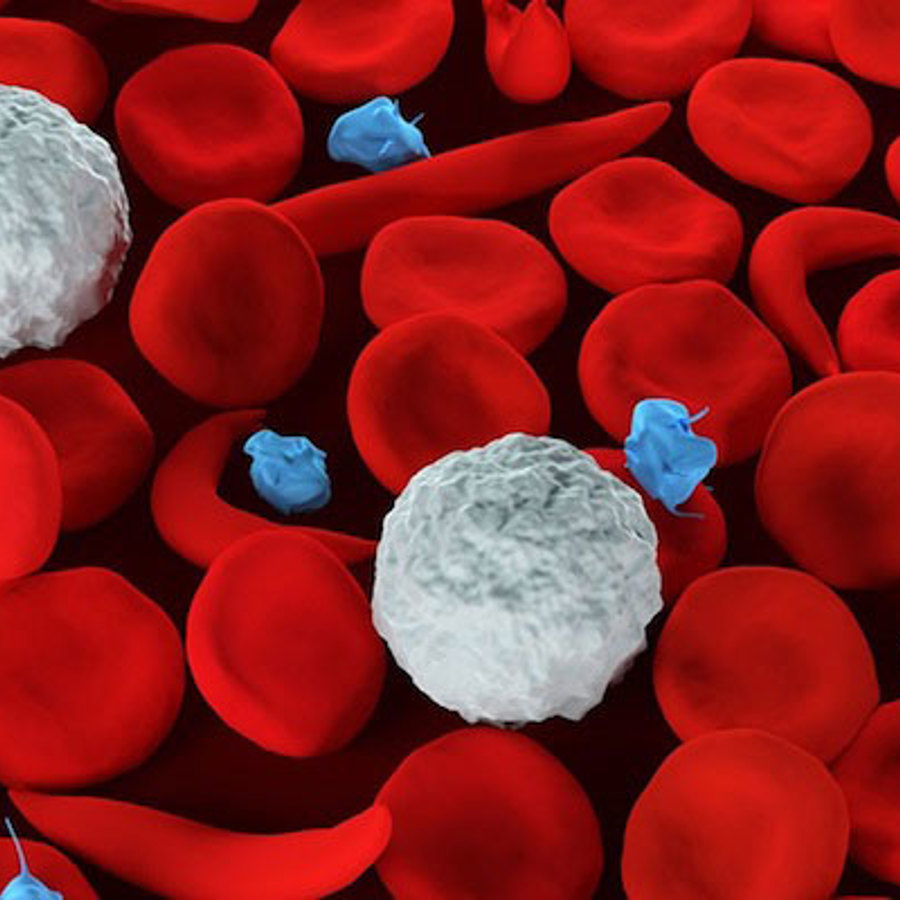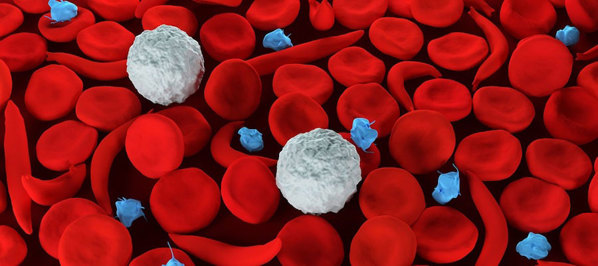
Can you give examples of beneficial mutations? Like sickle cell and malaria resistance?
October 5, 2012

- Related Topics:
- Mutation,
- Autosomal recessive inheritance,
- Carrier,
- Population genetics
An undergraduate student from the Philippines asks:
“I have a report on mutation related diseases and I will be writing about Sickle Cell Anemia because it is interesting. You see, people have this notion that mutation is bad and I want to change that. I want to show the good side of mutation, in this case malaria resistance. I want to add more. Can you give me other mutation related stuff that is beneficial?”
You are exactly right, not all mutations are bad. Some can be downright useful!
Lactose tolerance is one of these. It allows adults to drink milk. Another is having extra copies of the amylase gene. This lets people digest starch better. And the list goes on and on.
Some mutations can be useful in one situation and not so useful in another. CCR5 delta 32 mutation is a great example of this1. This one can give you some resistance to HIV but make you more sensitive to West Nile Virus. Which viruses are lurking in your specific neighborhood can decide whether this is a good or bad mutation to have.
Another example is skin pigmentation. If you live in an area with really intense sunlight, darker skin is better: the dark-brown pigment protects you from too much UV damage2. But in areas with less sunlight, lighter skin can be beneficial: it is better at storing vitamin D (which you mostly get from the sun). This storage of vitamin D will come in handy when your body needs it during the cloudy seasons2!
Sickle cell anemia is different from these kinds of mutations though. People who are carriers of the mutation are more resistant to malaria than are people who don’t carry it. But the downside is that a child of two carrier parents has a 25% of getting sickle cell anemia.
There are a bunch of other mutations that might work in a similar way. Here are some of them (including sickle cell):
|
Gene/Mutation |
Benefit (Carriers) |
Condition |
|
Hemoglobin-S |
Resistance to malaria |
Sickle cell anemia |
|
CFTR |
Resistance to tuberculosis? Resistance to cholera? |
Cystic fibrosis |
|
RhD |
Resistance to toxoplasma? |
Hemolytic disease of the newborn |
|
HEXA |
Resistance to tuberculosis? |
Tay Sachs |
|
Connexin-26 |
Resistance to bacterial infection Enhanced cell repair |
Deafness |
|
HBA1/HBA2 |
Resistance to malaria Decreased heart disease? |
Thalassemia |
It looks like scientists are finding a lot of these double-edged mutations. But looks can be deceiving. With the exception of thalassemia and its associated resistance to malaria, none of these have as clear of an advantage as sickle cell anemia.
All of these conditions are more common in certain populations than scientists would expect. This is why scientists are searching for and finding some evidence for the benefits of being a carrier of these conditions.
Now having an advantage for the carrier isn’t the only way disease genes can be more common than expected. As you’ll see below, there are many other reasons genetic conditions can be higher than expected in a population.
Still, even the advantage doesn’t really sound that great. After all, having a much higher chance of having a sick child seems like a very high price to pay. But in the eyes of selection, it isn’t.
All that matters in selection is whether you are more successful at having kids. And if you are in an area where the advantage of being a carrier outweighs the disadvantage of having the occasional child with the condition, carriers will become more common. Which means that the genetic condition will be more common too.
OK, that might have been a bit confusing. Let me break it down a little to make it clearer and give some detail about how this all works.
An In-Depth Look at Sickle Cell Anemia
We have two copies of most of our genes. One copy comes from mom and the other from dad.
Each gene has the instructions for one small part of you. So there is a gene that holds the instructions for insulin, another for growth hormone, still another for the protein that carries oxygen in our blood (hemoglobin), and so on.
Each of these genes can come in different versions too. For example, one version of the hemoglobin (Hb) gene makes the common form of hemoglobin and another makes a form that gets really sticky when it loads up on too much oxygen.
If you have one copy of the regular gene and one copy of the sticky one, you get a mix of hemoglobin in your blood cells. By and large you are fine with the added bonus that the malarial parasite can’t get into your red blood cells as easily. You are resistant (although not immune) to malaria.
The sticky hemoglobin isn’t all good though. When you have two copies of the sticky form of the gene, your red blood cells go from doughnut shaped to sickle shaped when they have too much oxygen. The sickle shaped ones can’t get through small blood vessels causing all the problems associated with sickle cell anemia. And these problems are huge.

Up until the 1970’s, people with sickle cell anemia lived an average of fourteen years (things are much better now with the average age being pushed to fifty). What this means is that when this mutation became common thousands of years ago, people with two copies of the sticky hemoglobin gene would have died before they had children.
Again this seems like a high price to pay, but in areas with lots of malaria it wasn’t. There you were much more likely to die from malaria as a non-carrier than you were to be a carrier, find another carrier and have a child with sickle cell anemia.
As a noncarrier, malaria kills you before you can have any children. As a carrier, you live and so do most of your kids.
This is probably why the sickle cell version of the hemoglobin gene is so common in some populations. You are more likely to survive and have kids that are your non-carrier brethren.
This does such a good job of explaining how sickle cell anemia became common in some populations that scientists have tried to do something similar with other genetic conditions. But like I said, most of these aren’t as well established. And selection doesn’t have to be the only reason a bad gene hangs around.
Bad Luck, Small Populations
Tay Sachs is more common in people of Ashkenazi Jewish descent than in other populations. Scientists have proposed that being a carrier of Tay Sachs might protect you from tuberculosis. But Tay Sachs might be common in this population by pure chance.
The Ashkenazi Jewish population was founded by very few people, who tended to marry within their same group. So if one of the few original founders of this group carried the Tay Sachs version of the HEXA gene, then it would stay in the population. That could explain the high rate of Tay Sachs in the Ashkenazi Jewish population, as opposed to another type of selection.
This also makes sense because so many other genetic conditions are common in this group. The disease genes they carried stayed in the population. (Remember the average person has 5-10 disease genes floating in our gene pool.)
But this explanation probably doesn’t work for a condition like cystic fibrosis. Being a carrier most likely had some sort of advantage for these folks. In fact, it was such an advantage that new mutations have kept appearing in the CFTR gene over time. There are many mutations in the CFTR gene that lead to cystic fibrosis.
So mutations can be good and they can be bad. Some might be great in one situation and devastating in another.

Author: Dr. D. Barry Starr
Barry served as The Tech Geneticist from 2002-2018. He founded Ask-a-Geneticist, answered thousands of questions submitted by people from all around the world, and oversaw and edited all articles published during his tenure. AAG is part of the Stanford at The Tech program, which brings Stanford scientists to The Tech to answer questions for this site, as well as to run science activities with visitors at The Tech Interactive in downtown San Jose.
 Skip Navigation
Skip Navigation
